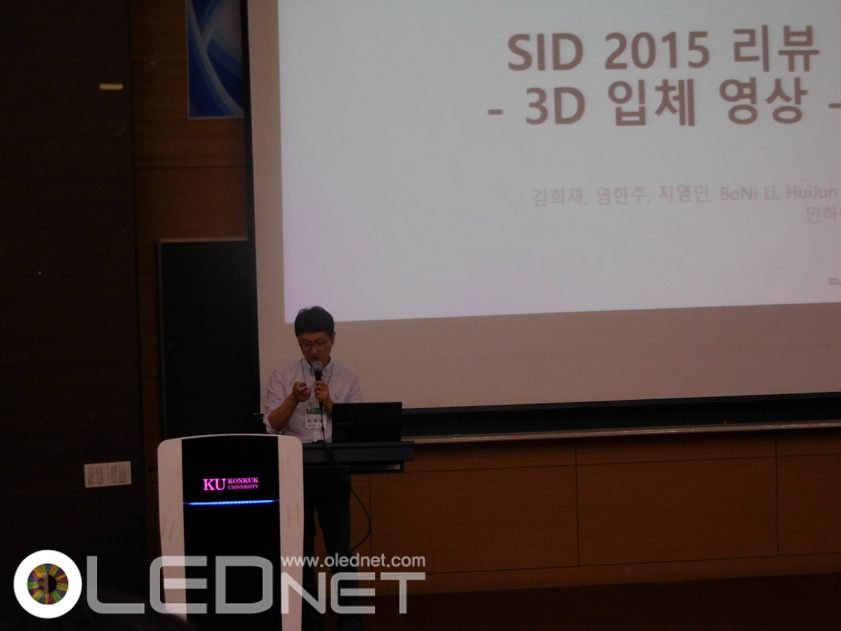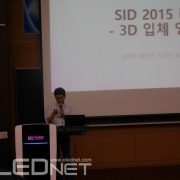HUD and HMD Meet Virtual Reality and Soar
At SID 2015 Review Workshop held in Konkuk University on July 31, Inha University’s Associate Professor Jae-Hyeung Park announced that interest in HUD (head-up display) and HMD (head-mounted display) increased at SID 2015.
HUD signifies technology that provides diverse information for the driver beyond the role of a front glass that simply allows the outside to be viewed and provides protection. Through HUD, drivers can grasp vehicular and destination information without having to take eyes off the road. At this juncture, AR (augmented reality) HUD is more than a simple display as it recognize the user’s movements and applies it to the display.
In SID 2015 paper, Japan’s Ricoh termed the device that self-intervenes in the vehicular operation as ADAS (Advanced Driving Assistance System) and announced that the information from the device applied to HUD will be able to help the user’s recognition and decision making. It was also added that improved AR can be realized when the contrast range is increased to be equal to reality and reiterated and the distance from the virtual image is 5m.
HMD, as a head-mounted device, provides differentiated feelings of immersion compared to other displays. Due to the increased realism from the wide viewing angle, HMD was widely used as an entertainment display, but with the recent increased interest in AR, it is receiving much spotlight as an AR display device.
At SID 2015, the West Saxon University of Applied Sciences of Zwickau revealed an HMD device that actualizes AR naturally by changing the distance where image is shown according to the use by adjusting the focal distance. Zhejiang University’s college of Optical Science and Engineering used method of showing hologram to each user’s eyes using the light field concept that realizes the light strength to all directions from all points in 3D and produced improved AR.
Park explained that with SID 2015 as a starting point, the AR related HMD and HUD interest and research will increases greatly and that the trend will continue in future.
Samsung Electronics released HMD device Samsung Gear VR that can be used by plugging in to Galaxy S6 or Galaxy S6 Edge. Oculus VR and Sony Computer Entertainment each revealed OLED applied VR headset Oculus Rift and Project Morpheus, and scheduled release regular product in Q1 and H1 of 2016 respectively. Korea’s HLB released AproVIEW S2 which used virtual image distance actualization method, a first for HUD.

Inha University’s Associate Professor Jae-Hyeung Park at SID 2015 Review Workshop

